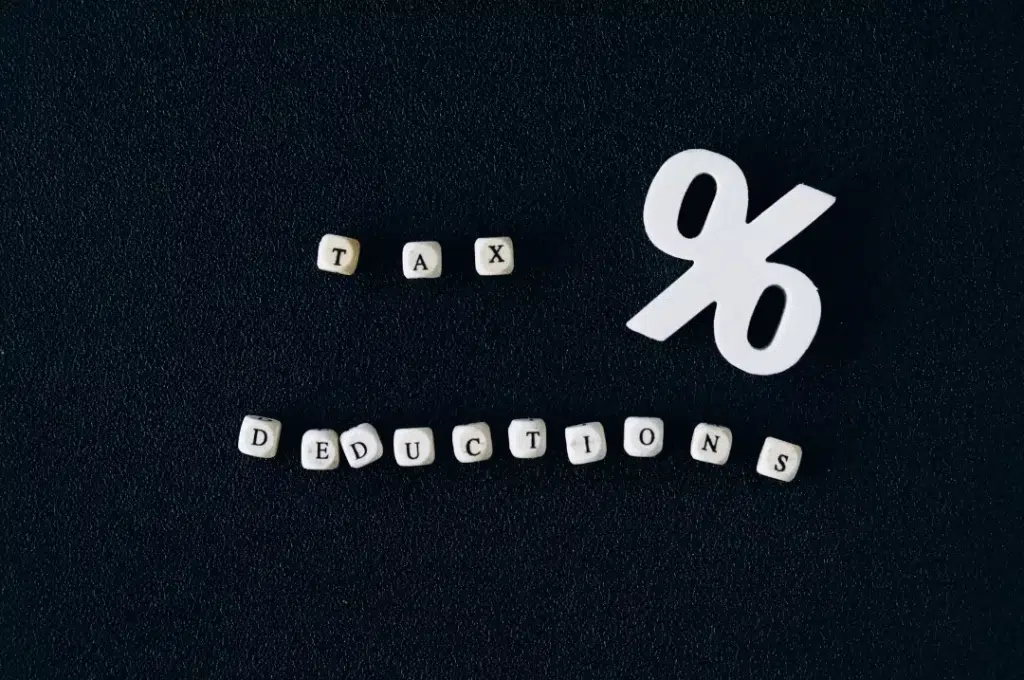Should I claim a deduction for personal super contributions?
Table of Contents
ToggleAre you considering claiming a deduction for your personal super contributions? Understanding the ins and outs of this process is crucial before making any decisions that could impact your taxes and retirement savings.
Claiming a deduction allows you to reduce your taxable income by the amount you contribute to your super. This, in turn, can lead to potential tax savings. However, it’s important to navigate this process carefully and understand the eligibility criteria and considerations involved.
In this blog post, we’ll explore the topic of claiming a deduction for personal super contributions and help you determine whether it’s the right choice for you.
How much can I claim as a tax deduction from personal super contributions?
When it comes to claiming a tax deduction for personal super contributions, understanding the maximum amount you can claim is crucial. The Australian government has set limits and caps to ensure fairness and balance in the tax system.
The maximum amount you can claim as a tax deduction for personal super contributions is subject to the annual concessional contribution cap. For the 2024-2025 financial year, this cap is set at $30,000. It’s important to note that this cap includes both employer contributions (such as the compulsory Superannuation Guarantee) and personal contributions you make yourself.
If you’re making personal super contributions and intend to claim a tax deduction, you need to be mindful of any employer contributions made on your behalf. These contributions will count towards the annual cap. It’s essential to keep track of both your personal contributions and the employer contributions to ensure you don’t exceed the cap and incur any penalties.
Let’s consider an example to illustrate how this works. Suppose your employer contributes $10,000 to your super, and you decide to make an additional personal contribution of $20,000. In this case, the total concessional contributions made on your behalf would amount to $30,000 ($10,000 employer contribution + $20,000 personal contribution). As the annual cap is $27,500, you would exceed the cap by $2,500.
If you exceed the concessional contribution cap, the excess amount will be included in your assessable income and taxed at your marginal tax rate. Additionally, you may have to pay an excess concessional contributions charge. To avoid these potential issues, it’s essential to monitor your contributions and stay within the annual cap.
It’s worth noting that the concessional contribution cap is subject to indexation and may increase in future financial years. Therefore, it’s always a good idea to stay updated on the current cap to ensure compliance with the regulations.
Who is eligible to claim a deduction?
When it comes to claiming a tax deduction for personal super contributions, eligibility criteria play a significant role. The Australian government has specific guidelines to determine who can claim a deduction and under what circumstances.
Employment status
Both employed individuals and self-employed individuals are eligible to claim a deduction for personal super contributions. If you’re employed, you can claim a deduction for personal contributions made on top of your employer’s Superannuation Guarantee contributions. If you’re self-employed, you can claim a deduction for personal contributions made to your super fund.
Age limitations
To be eligible to claim a deduction, you must be under the age of 75. However, if you’re aged 65 to 74, you need to meet the “work test” to claim a deduction. The work test requires you to have worked for at least 40 hours within a consecutive 30-day period during the financial year in which you intend to claim the deduction.
Notification requirement
To claim a deduction, you must notify your superannuation fund of your intention to claim the deduction in writing. This notice is commonly referred to as the “notice of intent to claim a deduction.” It’s important to submit this notice to your superannuation fund before the earlier of the following: the day you lodge your tax return for the financial year or the end of the following financial year.
Availability of assessable income
To claim a deduction, you must have sufficient assessable income against which you can offset the deduction. In other words, you must have earned income or other taxable income during the financial year to utilise the deduction effectively.
Note: that if you’re eligible to claim a deduction but choose not to do so, your personal super contributions will be considered non-concessional contributions, which do not attract a tax deduction.

When to claim a super tax deduction?
Claiming a tax deduction for personal super contributions requires careful timing. It’s important to be aware of the specific timeframe within which you can make your claim.
The deadline for claiming a super tax deduction is tied to the submission of your tax return. Generally, you must submit your tax return by October 31st following the end of the financial year. However, if you engage a registered tax agent to assist you with your tax affairs, you may have an extended deadline.
To claim a deduction, you must submit a “notice of intent to claim a deduction” form to your superannuation fund. This notice should be lodged before the earlier of two dates: the day you lodge your tax return for the financial year or the end of the following financial year. In simpler terms, you have until the date you submit your tax return or until the end of the following financial year to notify your superannuation fund of your intention to claim a deduction.
However, it’s important to understand that timing can affect the processing of your notice and the availability of the deduction. For example, if you submit your notice close to the deadline, your superannuation fund may not process it in time, and you may have to wait until the following financial year to claim the deduction.
To avoid any potential issues, it’s recommended to submit your notice of intent to claim a deduction as early as possible. This allows your superannuation fund sufficient time to process the notice and ensures a smooth claiming process when you submit your tax return.
Additionally, keep in mind that you should only claim the deduction for personal super contributions that have been received and acknowledged by your superannuation fund. Ensure that your contributions have been allocated and appear on your super statement before including them in your tax return.
How to claim a superannuation tax deduction?
Claiming a tax deduction for personal super contributions involves a straightforward process, but it’s essential to follow the correct steps to ensure a successful claim.
Here’s a step-by-step guide on how to claim a superannuation tax deduction:
Step 1: Make personal super contributions
Start by making personal contributions to your superannuation fund. These contributions can be voluntary payments made from your after-tax income, on top of the compulsory contributions made by your employer.
Step 2: Determine your eligibility
Ensure that you meet the eligibility criteria to claim a deduction for personal super contributions. This includes factors such as your employment status, age, and availability of assessable income. Refer to the eligibility section in this blog post for more details.
Step 3: Complete the "Notice of Intent to Claim a Deduction"
Obtain the “notice of intent to claim a deduction” form from your superannuation fund. This form is also available on the Australian Taxation Office (ATO) website. Fill out the form accurately, providing all the necessary information.
Step 4: Submit the Notice to your superannuation fund
Submit the completed notice of intent to claim a deduction to your superannuation fund. Ensure that you do this before the earlier of two dates: the day you lodge your tax return for the financial year or the end of the following financial year. Submitting the notice can be done electronically through the fund’s online portal or by mail, depending on the procedures of your specific fund.
Step 5: Receive confirmation from your superannuation fund
Once your superannuation fund receives the notice, they will process it and provide you with confirmation. This confirmation may be in the form of a written acknowledgment or an email. Keep this confirmation for your records, as you’ll need it when preparing your tax return.
Step 6: Complete your tax return
When preparing your tax return, include the amount of personal super contributions you intend to claim as a tax deduction. The ATO requires you to report this information under the relevant section of your tax return, such as the deductions section or the superannuation contributions section. Consult the ATO guidelines or seek professional tax advice to ensure accurate reporting.
Step 7: Lodge your tax return
Submit your completed tax return to the ATO by the deadline. As mentioned earlier, the deadline is generally October 31st following the end of the financial year. If you engage a registered tax agent, you may have an extended deadline.
By following these step-by-step instructions, you can successfully claim a superannuation tax deduction for your personal contributions. Remember to keep all relevant documentation, such as the notice of intent to claim a deduction and confirmation from your superannuation fund, for reference and record-keeping purposes. If you have any specific questions or uncertainties, consult with a financial professional or contact the ATO for guidance.

Should I claim a deduction for personal super contributions?
Deciding whether to claim a deduction for personal super contributions is an important consideration that depends on various factors. Let’s explore the benefits and drawbacks to help you make an informed decision based on your individual circumstances.
Benefits of claiming a deduction
Tax savings
Claiming a deduction allows you to reduce your taxable income by the amount of your personal super contributions. This can lead to potential tax savings, as your tax liability is calculated based on the reduced income.
Boost retirement savings
Making personal contributions to your superannuation fund helps increase your retirement savings. By claiming a deduction, you can contribute more towards your super and potentially enjoy the benefits of compound interest over time.
Flexibility and control
Claiming a deduction for personal contributions gives you greater control over your retirement savings. You can proactively contribute additional funds to your super and tailor your retirement strategy according to your financial goals.
Drawbacks and considerations
Lock-in period
Once you claim a deduction for personal contributions, those funds become part of your superannuation and generally cannot be accessed until you reach preservation age (typically between 55 and 60, depending on your date of birth). Therefore, consider whether you have sufficient accessible funds for short-term financial needs before committing to a deduction.
Impact on cash flow
Claiming a deduction reduces your taxable income, which can result in a lower tax bill. However, it also means you’ll have less take-home pay in the short term since your contributions are made from your after-tax income. Assess your cash flow situation and ensure you can comfortably manage your expenses after making personal contributions.
Marginal Tax Rate
Consider your marginal tax rate when deciding to claim a deduction. If you’re in a higher tax bracket, the tax savings from claiming a deduction may be more significant. On the other hand, if you’re in a lower tax bracket or close to the tax-free threshold, the benefits may be less pronounced.
Superannuation contribution caps
Remember to stay within the annual concessional contribution cap when making personal contributions and claiming a deduction. Exceeding the cap can result in penalties and additional taxes. Carefully monitor your contributions to avoid any issues.
Ultimately, the decision to claim a deduction for personal super contributions should align with your financial goals and priorities. Consider factors such as your current financial situation, retirement objectives, cash flow requirements, and tax implications. It’s also beneficial to consult with a financial advisor or tax professional who can provide personalised advice based on your specific circumstances.
Can you claim a tax deduction for catch-up concessional contributions?
The concept of catch-up concessional contributions allows individuals to contribute more to their superannuation fund and potentially claim a tax deduction for the additional contributions. Let’s explore how catch-up concessional contributions work and whether you can claim a tax deduction for them.
Catch-up concessional contributions were introduced to provide individuals with the opportunity to make additional contributions to their super if they have unused concessional contribution caps from previous years. Concessional contributions include employer contributions (such as Superannuation Guarantee contributions) and personal contributions claimed as a tax deduction.
To be eligible for catch-up concessional contributions, you must meet the following criteria:
Total superannuation balance
Your total superannuation balance must be below $500,000 as of June 30th of the previous financial year. If your balance exceeds this threshold, you may not be eligible for catch-up concessional contributions.
Unused concessional contribution cap
You must have unused concessional contribution cap amounts from previous financial years. The unused amounts can accumulate for up to five years, starting from the 2018-2019 financial year.
If you meet these eligibility requirements, you can make catch-up concessional contributions and potentially claim a tax deduction for them. However, it’s essential to consider the following factors:
Concessional contribution cap
Catch-up concessional contributions are subject to the annual concessional contribution cap, which is $27,500 for the 2023-2024 financial year. Ensure that your total concessional contributions, including catch-up contributions, do not exceed this cap to avoid penalties and additional taxes.
Notice of Intent
As with regular personal super contributions, you must submit a notice of intent to claim a deduction for catch-up concessional contributions to your superannuation fund. This notice should be submitted within the required timeframe, typically before lodging your tax return for the financial year or by the end of the following financial year.
As always, consulting with a financial advisor or tax professional can provide personalised guidance based on your specific circumstances. They can help you understand the intricacies of catch-up concessional contributions, assess the tax implications, and determine the optimal strategy for maximising your superannuation savings.

Deciding whether to claim a tax deduction for personal super contributions is an important consideration that depends on various factors. Remember to stay within the annual concessional contribution cap and comply with the notification requirements to avoid penalties and additional taxes. Monitoring your contributions and seeking professional advice can help you navigate the complexities of the system and ensure a smooth claiming process.
We encourage you to carefully evaluate your current financial situation, consult with a financial advisor or tax professional, and consider your retirement objectives before making a decision. They can provide personalised guidance based on your specific circumstances and help you make an informed choice that optimises your tax savings while aligning with your overall financial goals.









